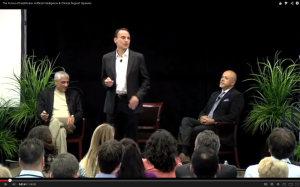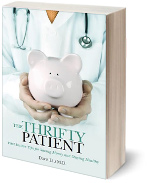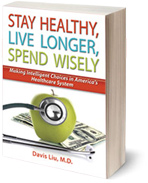Abraham Verghese, Vinod Khosla, Robert Pearl – The Future of Healthcare – Stanford Innovation Summit
 I recently jumped at the opportunity to attend the 2013 Healthcare Innovation Summit at Stanford Graduate School of Business. Subtitled IT-Enabled Disruption, it featured opening keynote speaker Aetna CEO Mark Bertolini, Stanford psychologist and lecturer Dr. Kelly McGonigal, and many other interesting people asking – how do we change health care? I knew little of Mr. Bertolini and nothing of Dr. McGonigal and the former made me think differently about the role of insurers in the new health care reform world and the latter reinforced my belief that the current trend in pushing the complete onus of health squarely on the individual may be too simplistic.
I recently jumped at the opportunity to attend the 2013 Healthcare Innovation Summit at Stanford Graduate School of Business. Subtitled IT-Enabled Disruption, it featured opening keynote speaker Aetna CEO Mark Bertolini, Stanford psychologist and lecturer Dr. Kelly McGonigal, and many other interesting people asking – how do we change health care? I knew little of Mr. Bertolini and nothing of Dr. McGonigal and the former made me think differently about the role of insurers in the new health care reform world and the latter reinforced my belief that the current trend in pushing the complete onus of health squarely on the individual may be too simplistic.
But for me, the real reason for going was to hear three of the most fascinating people in health care.
First, Dr. Abraham Verghese, Professor for the Theory and Practice of Medicine at Stanford, who is world renowned for his belief in the sacred doctor-patient relationship and the power of human touch. Treating disease, which 21st century medicine is very good at is fundamentally different than healing the individual. As a practicing doctor, he has my complete admiration; so finally having the chance to see him and hear him in person was worth taking a day off work and driving to Palo Alto.
Second, Mr. Vinod Khosla, founder of Khosla Ventures and co-founder of Sun Microsystems. He believes that entrepreneurial spirit and technology can change the world. Like the two speakers, Bertolini and McGonigal, one year ago I also did not know much about Khosla until I attended the Rock Health Innovation Summit in San Francisco. As the keynote speaker he had declared that, “Health care is like witchcraft and just based on tradition” and that eighty percent of doctors could be replaced by machines. That proclamation certainly got my attention and that of many others. I wondered what he might say to someone like Verghese.
Third, this was all moderated by Dr. Robert Pearl, CEO of the Permanente Medical Group and professor at the Stanford Graduate School of Business. Pearl leads the nation’s largest medical group which is responsible for over the health of 3.3 million Kaiser Permanente members in Northern California and known for his belief in the “power of physician-led, integrated medical delivery systems” to transform health care.
It was a great forum. Both speakers were accomplished, persuasive, and had significant stage presence. In addressing the same issue, they simply had very different points of views and perspectives simply as a consequence of their own individual history, experiences, and training. It felt like attending a high stakes court case or a presidential debate.
And perhaps because of their two very different points of view perhaps a solution for health care exists by marrying the best of both worlds.
Vinod Khosla
Khosla started, like he did at his Rock Health keynote, by stating that being the least knowledgeable person about health care was a tremendous advantage. Change in most industries does not come from within. It is usually disrupted by others outside of the industry. By being more naïve, he and other outsiders might frame the problem in health care differently than because he was not anchored by these biases.
Unlike his Rock Health keynote, which was far more provocative, Khosla seemed to have softened his perspective by noting his talk was “an exercise in technology speculation and musings” and by 2025 – 20 percent doctor included. He framed the health care issue as a global problem and something that needed to be addressed.
He noted the following truths.
- 10 to 20 percent of cases are delayed, missed, and have incorrect diagnosis.
- Doctors have cognitive limitations and cognitive biases simply because, like everyone else, they are human. In a study of 100 cases, though system related factors contributed to diagnoses error, the cognitive issue of premature closure (jumping to conclusions too soon) was the single most common cause playing a role in 75 percent of cases. A group of experts cannot agree on the likelihood of a particular outcome after an important procedure or screening test. The majority of second opinions result in a change in treatment, which is material.
Khosla believes that entrepreneurs will ask the naïve questions that uncover these hidden assumptions. By doing so, it might be possible to provide care in better and alternatives ways. This is vital as countries like India, where the doctor patient ratio is 10 times worse than the United States, cannot simply scale up 10 times as many medical schools and faculty to address their health care issues. However, entrepreneurs can move us to the grey zone of “speculations” and provide a sense of how to do things differently.
Change has been driven from outside the system. He believes that this be a consequence of empowering patients. Eighty percent of what doctors do can be replaced with better care than is currently being provided by the average doctor. Patients are more comfortable asking questions to a computer. Machines are better at integrative medicine. Technology can track large quantities of individual patient data, symptoms, and integrate with databases and population management guidelines to reach a conclusion far more accurately than say a psychiatrist who must deduce a diagnosis based on a fraction of a patient’s life from a doctor office visit.
Once that happens, doctors and hospitals will need to change.
There is nothing wrong with doctors. The “human” element of care can be provided by the most “humane” humans. It might not be doctors.
Khosla expects that over the next 10 years we will see massive innovations in health care. First these will be quite rudimentary solutions, which do very basic tasks. These basic tasks might shift patients out of the doctor’s office as patients do self administered EKGs, skin lesion check, and other tasks with smartphones that previous required a doctor office visit. As these systems get better, they will then start “learning” from the best doctors. Once developed both the physician expertise and the technology is now available to all doctors to be a “bionic assist and amplify” their skills and judgement.
Khosla noted that computerization has already happened in other areas, aviation with pilots, stock trading, and self driving cars. It will occur in medicine. It is simply a matter of time.
Abraham Verghese, MD
Verghese then took to the stage. Impeccably dressed, he reflected that this is “a tremendous time to be in health care.” The system is dysfunctional and needs massive change. Patients want care that is timely and cost-effective.
From his perspective, there is tremendous value in the power of physician observation and insight. Verghese likes to think of the body as a text. Its mysteries and aliments will reveal themselves if one studies it well. Once one knows what is occurring, one can then order lab testing judiciously.
That does not mean he is a luddite and shunning technology. Verghese loves the medical technology. He started carrying a doctor bag now filled with a portable ultrasound and a panoptic ophthalmoscope not just because of their ability to provide diagnostic capability, but also because it makes the doctor-patient relationship better. The pictures can make the discussion more robust, tangible, and personal.
He argues that the issue isn’t that doctors don’t know how to diagnose. Seventy-five percent of health care costs are spent on well-known chronic conditions. He jokingly lamented that it is rare to have a patient who presents with a pattern of unexplained symptoms, a true diagnostic dilemma. He welcomed those types of cases if only for the intellectual stimulation.
What patients really want is relief of suffering. They want doctors to be attentive to their problems. They want someone who cares and emphasizes with them. He highlighted the painting The Doctor.
Questions and Answers
Khosla was completely shocked that there were not enough applications that catered to emotions. Being human, emotions are a big part of our experience. He cited Pinterest as an example of such a program.
He believes that over the next 15 years data science will improve and advance medical care far more rapidly than anything discovered in research or taught in medical school.
Decreasing variation in outcomes will be very important to decrease medical care costs. How do we take the bottom 5 hospitals and make them as good as the top 5? Is it possible to narrow the variation care between New York City to the rural area of Indonesia? Technology in other industries has bent the cost curve. In health care this will mean using technology to amplify human expertise and move that expertise from doctors to nurse practitioners to patients.
Verghese noted that improvements will be made in end of life care. “In America, it seems like death is a surprise. We are not ready as a society. Life is a terminal disease.” There will also be opportunities in palliative care.
He was optimistic about the future of health care. “It is so dysfunctional that it can only be better.” He notes that more medical students are entering primary care specialties for the right reasons and despite a reimbursement system that nudges people to avoid primary care. They are answering the call.
He did like Khosla’s previous analogy about how the practice of medicine was like “witchcraft” and noted Khosla’s absence of using the term in the discussion.
Thoughts about the patient empowerment? Verghese noted that it depended on the patient’s point of view. A county patient is very disenfranchised and does not feel empowered. This is very different than patients he now cares for at Stanford who are well educated and aware of choices.
Conclusion
Pearl thanked the speakers and the audience and concluded that the American health care system needed to be both high tech and high touch. One or the other won’t work. I agree with this assessment. In health care we need to innovate ourselves out of our current predicament without losing sight of the humanity of medicine which is what doctors and patients still value and expect.
The entire much watch discussion is here.


 Get important exclusive advice and tips on how to save money while staying healthy.
Get important exclusive advice and tips on how to save money while staying healthy. Learn how to make intelligent choices in America's Healthcare System.
Learn how to make intelligent choices in America's Healthcare System.
What a wonderful summary! Thank you, as always,, for your insight and for adding to the robust discussion.